The document discusses processes, including:
- A process is an active entity that represents a program in execution, loaded into memory. It requires resources like CPU time and memory to accomplish tasks.
- Modern systems allow multiple processes to run concurrently by switching the CPU between processes rapidly. Processes share system resources.
- A process' state includes information stored in its process control block like the program counter, registers, scheduling information, memory allocation, and I/O status. During a context switch, the OS saves a process' context and restores another.


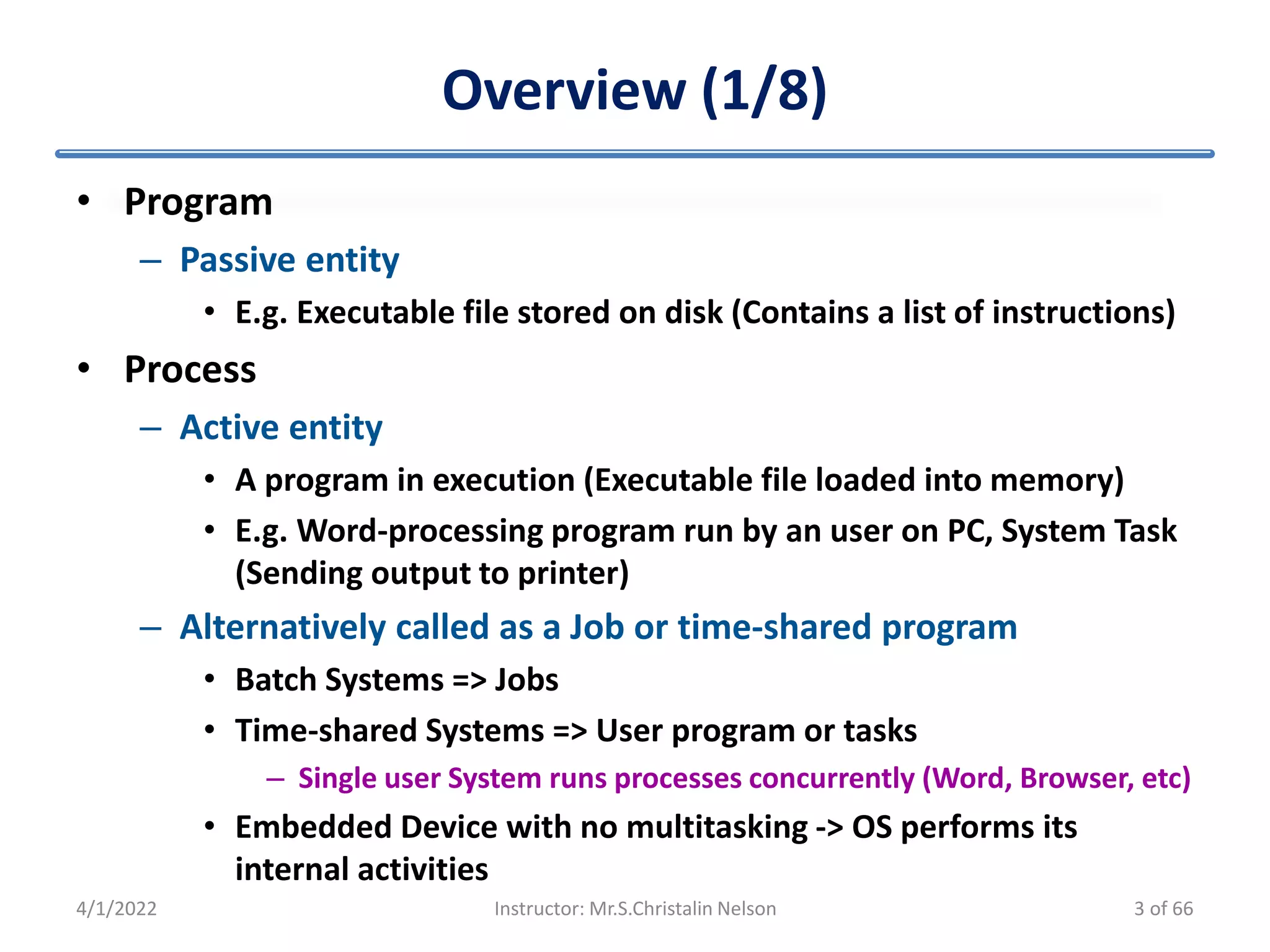
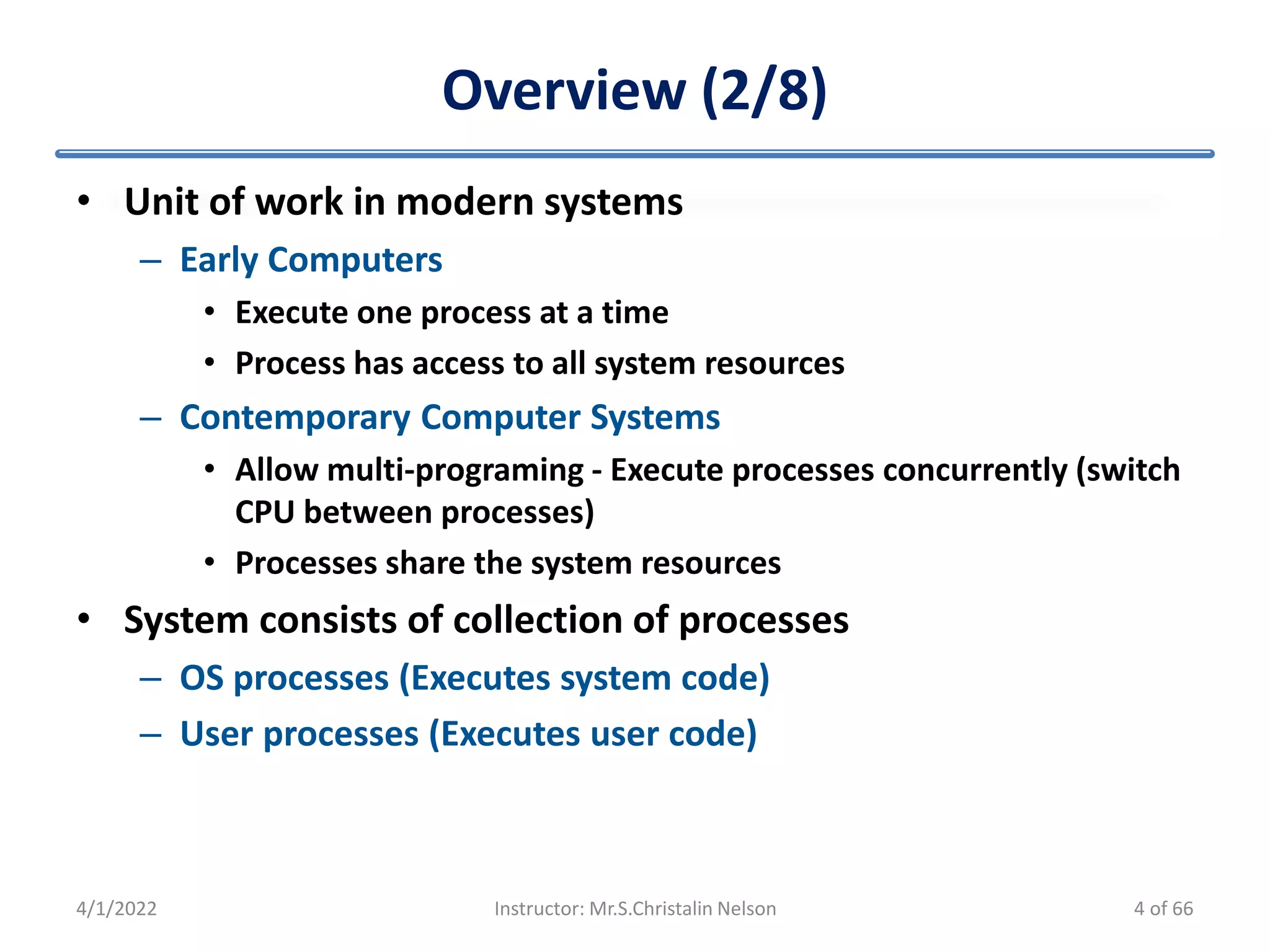
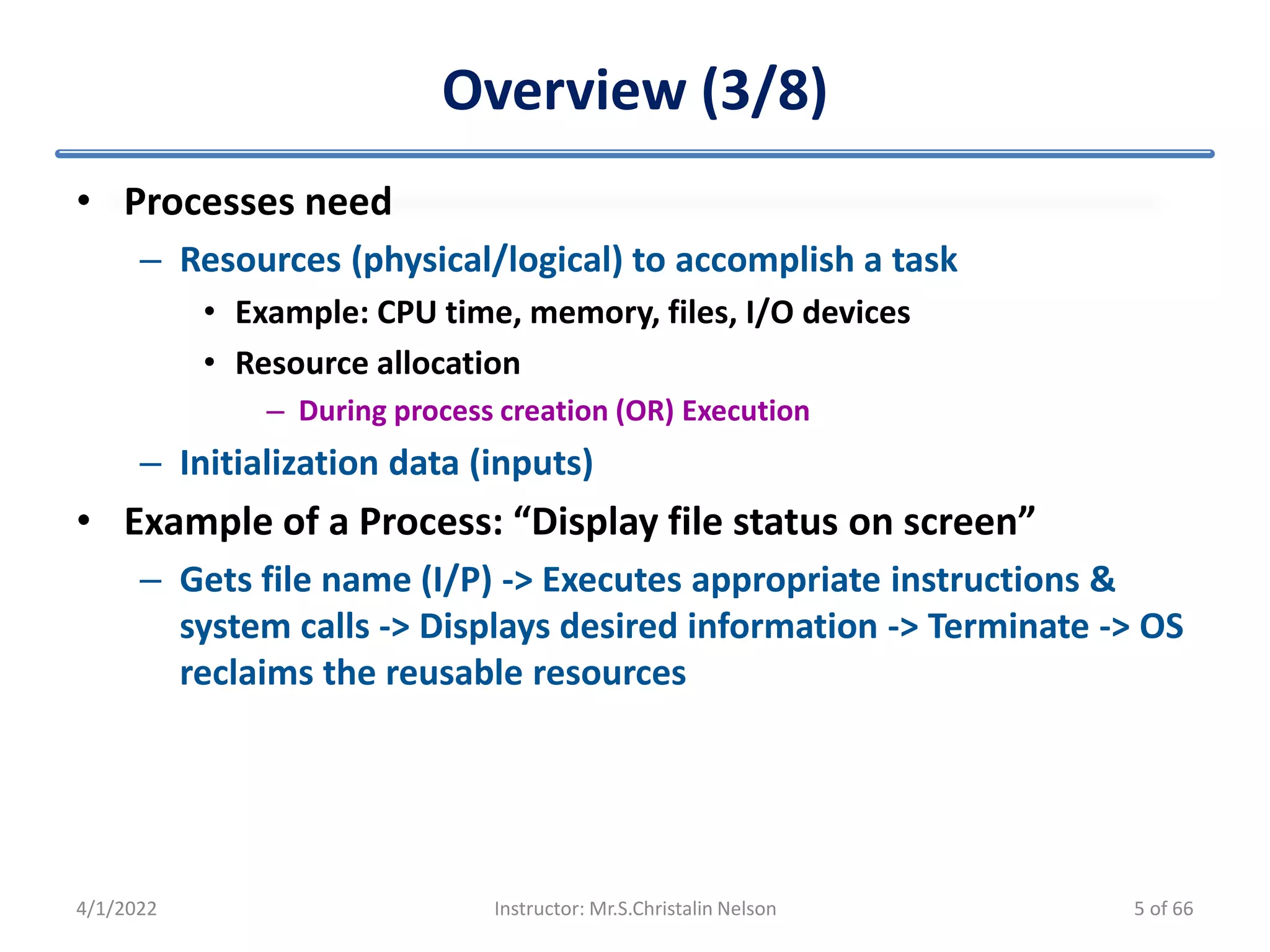
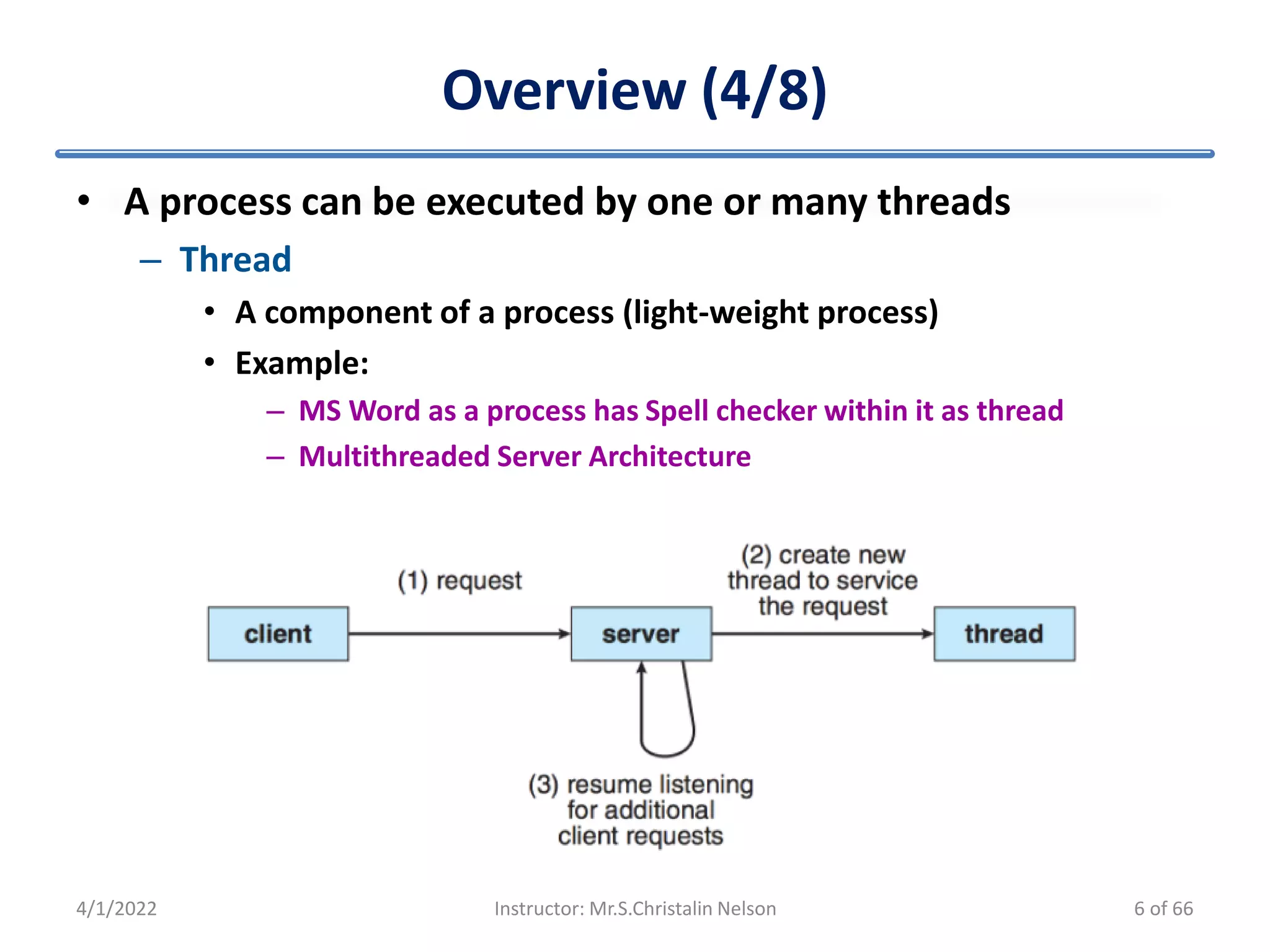









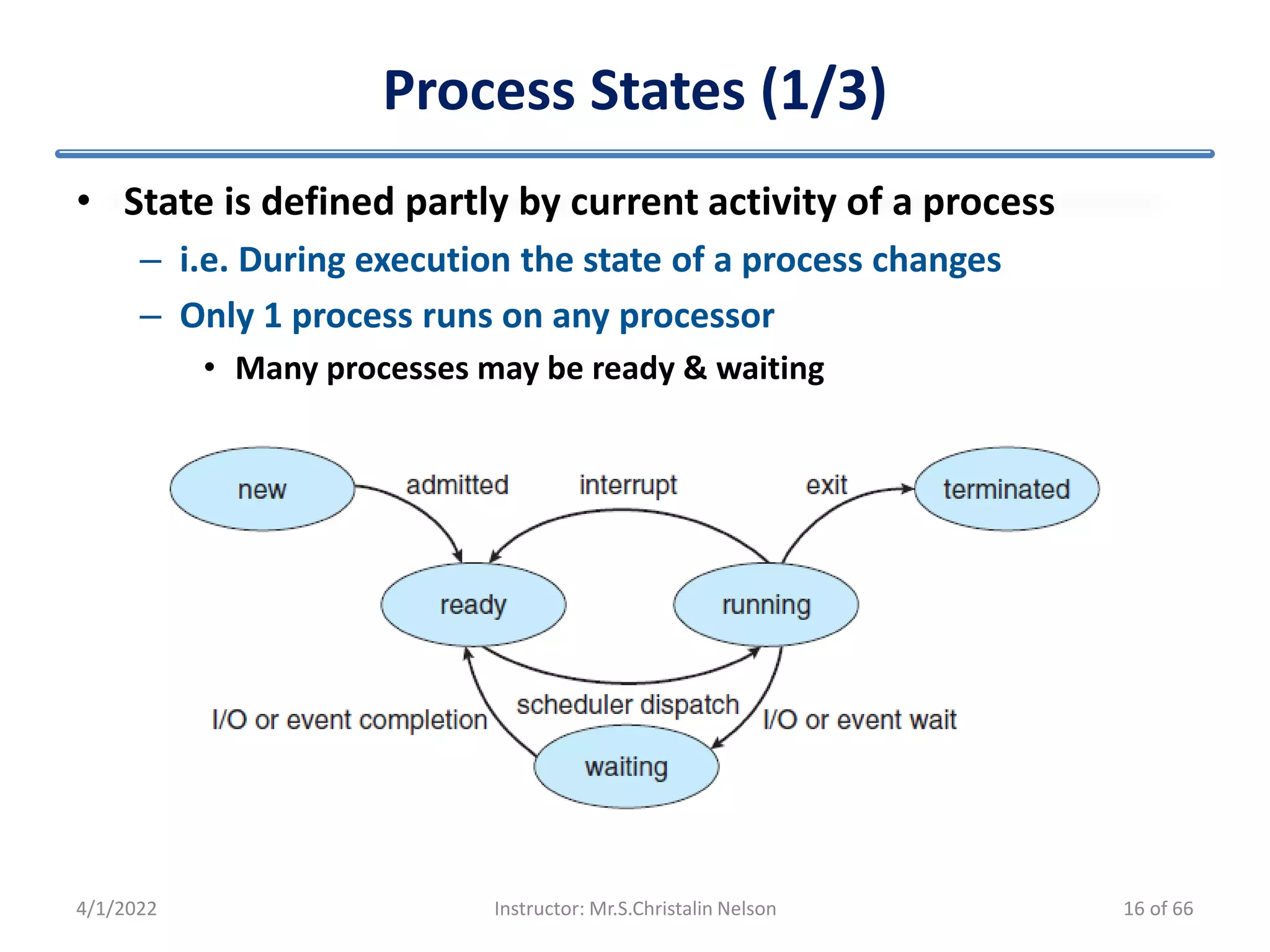





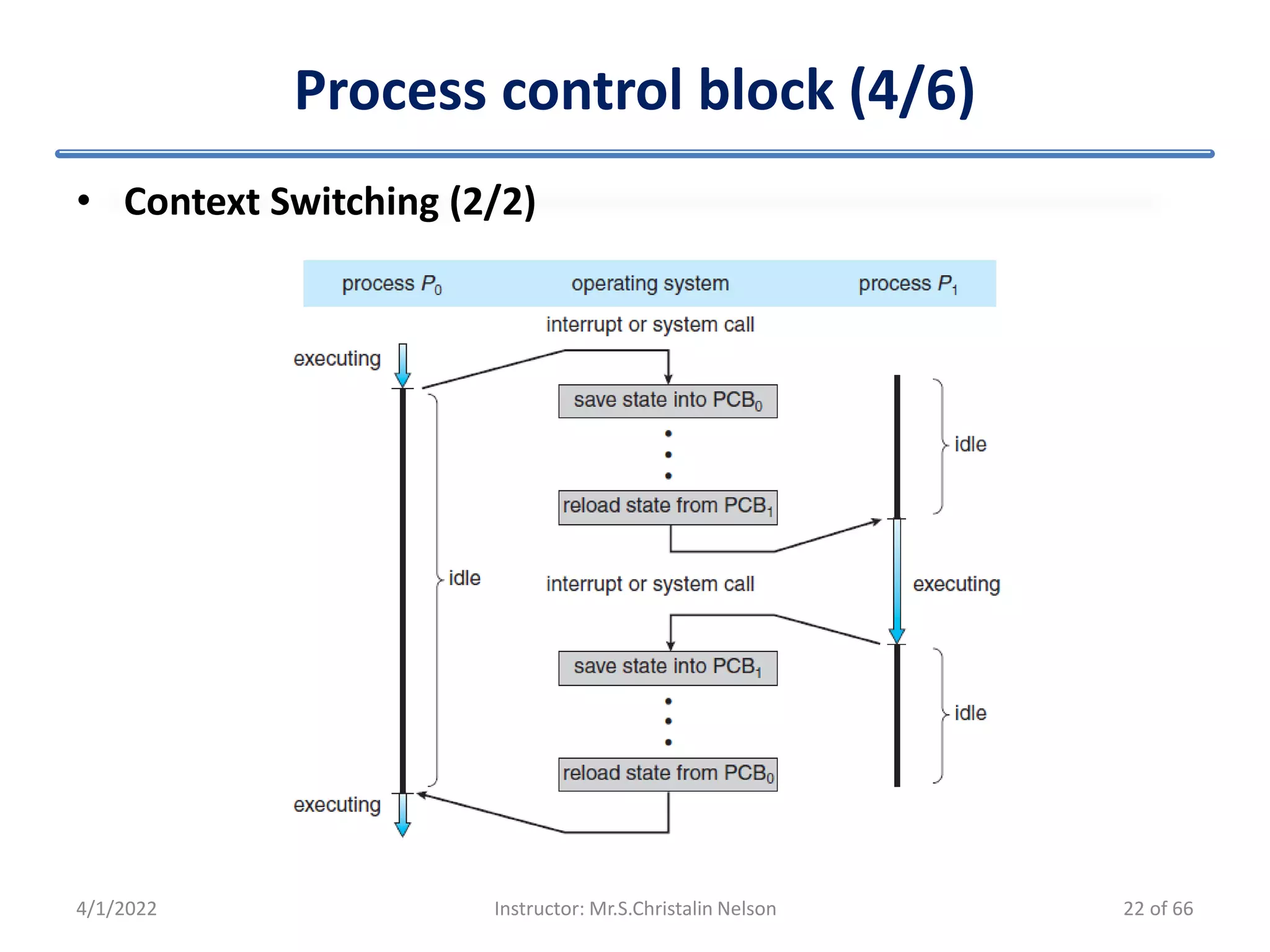

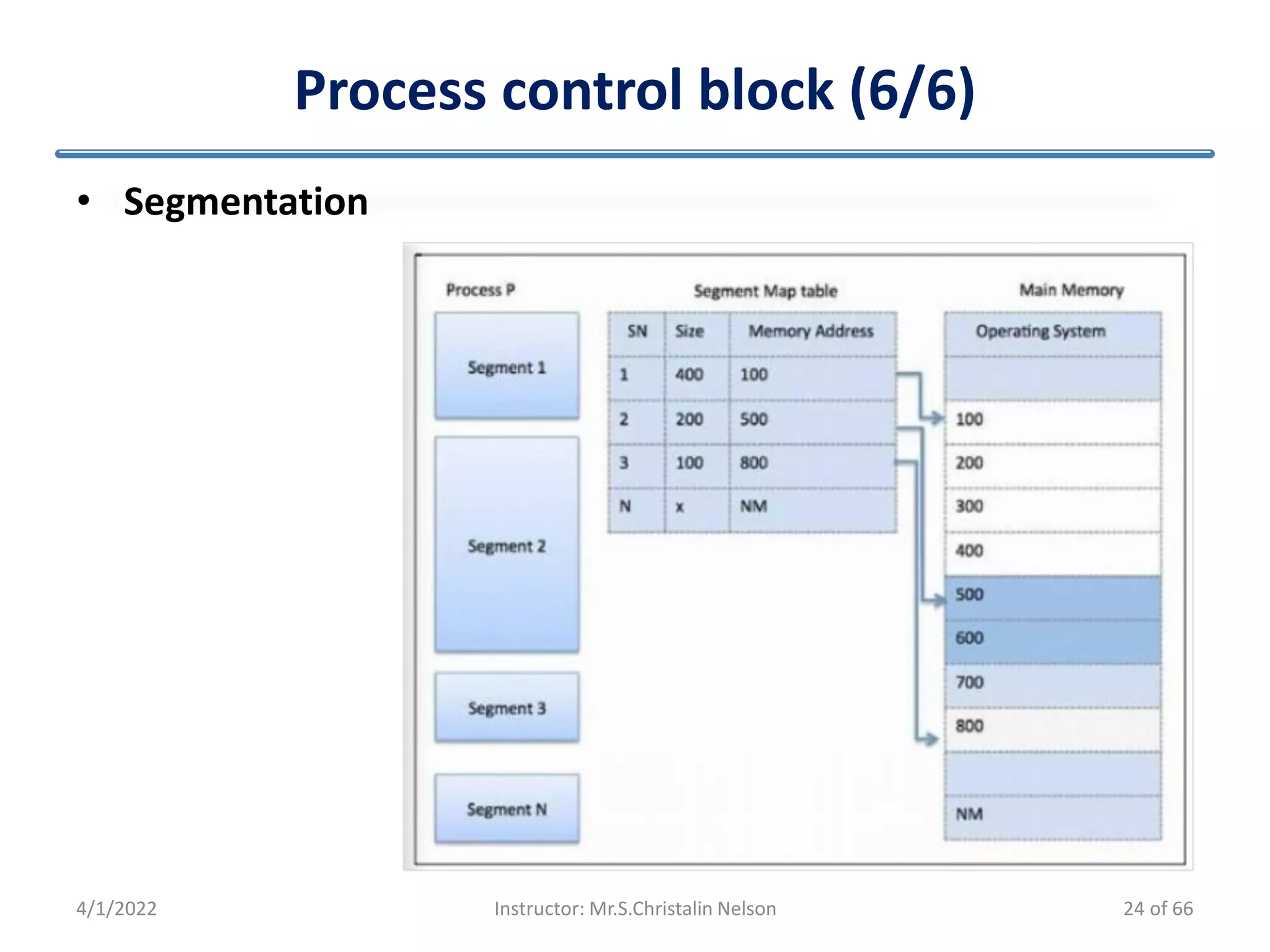

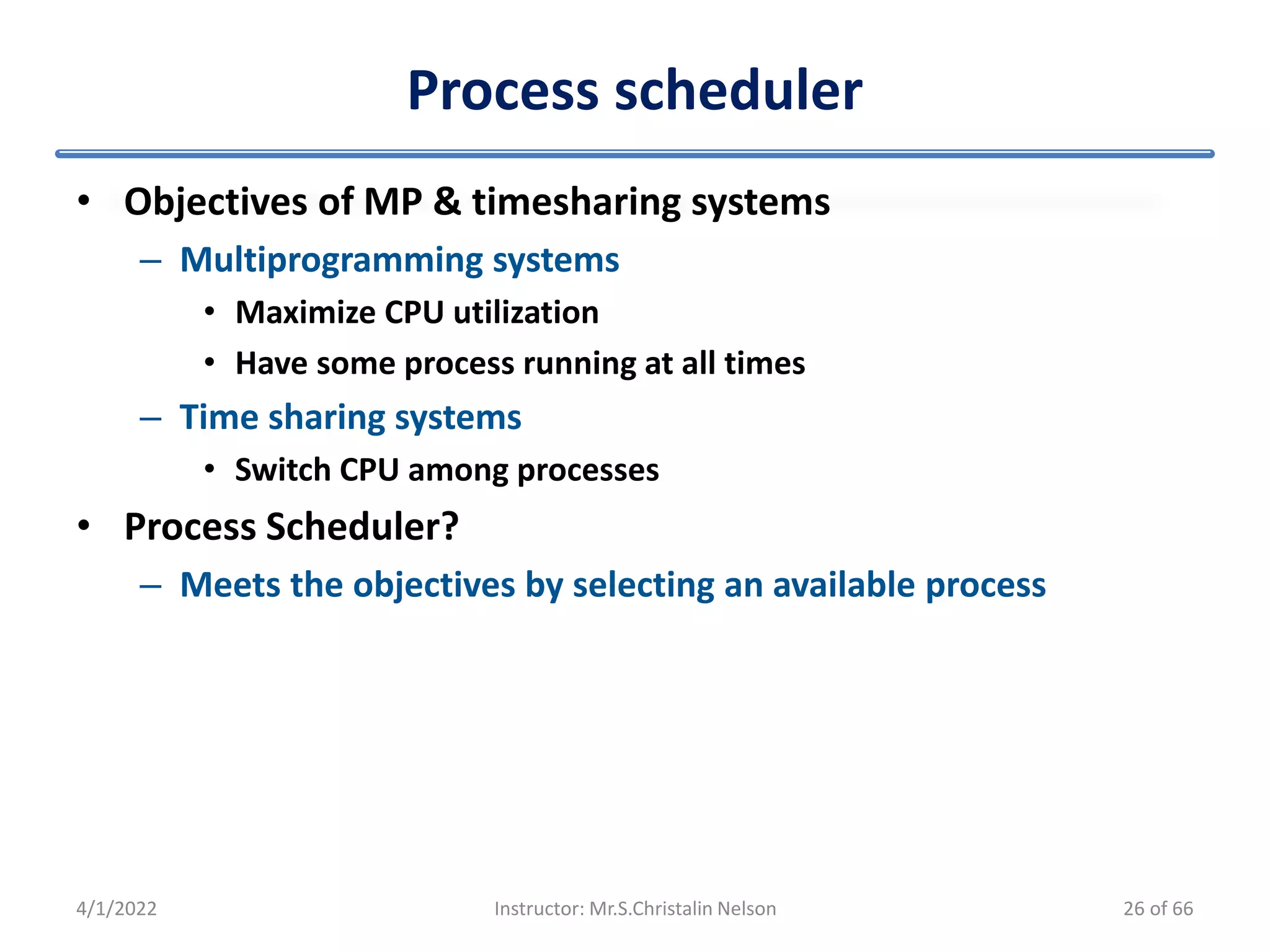

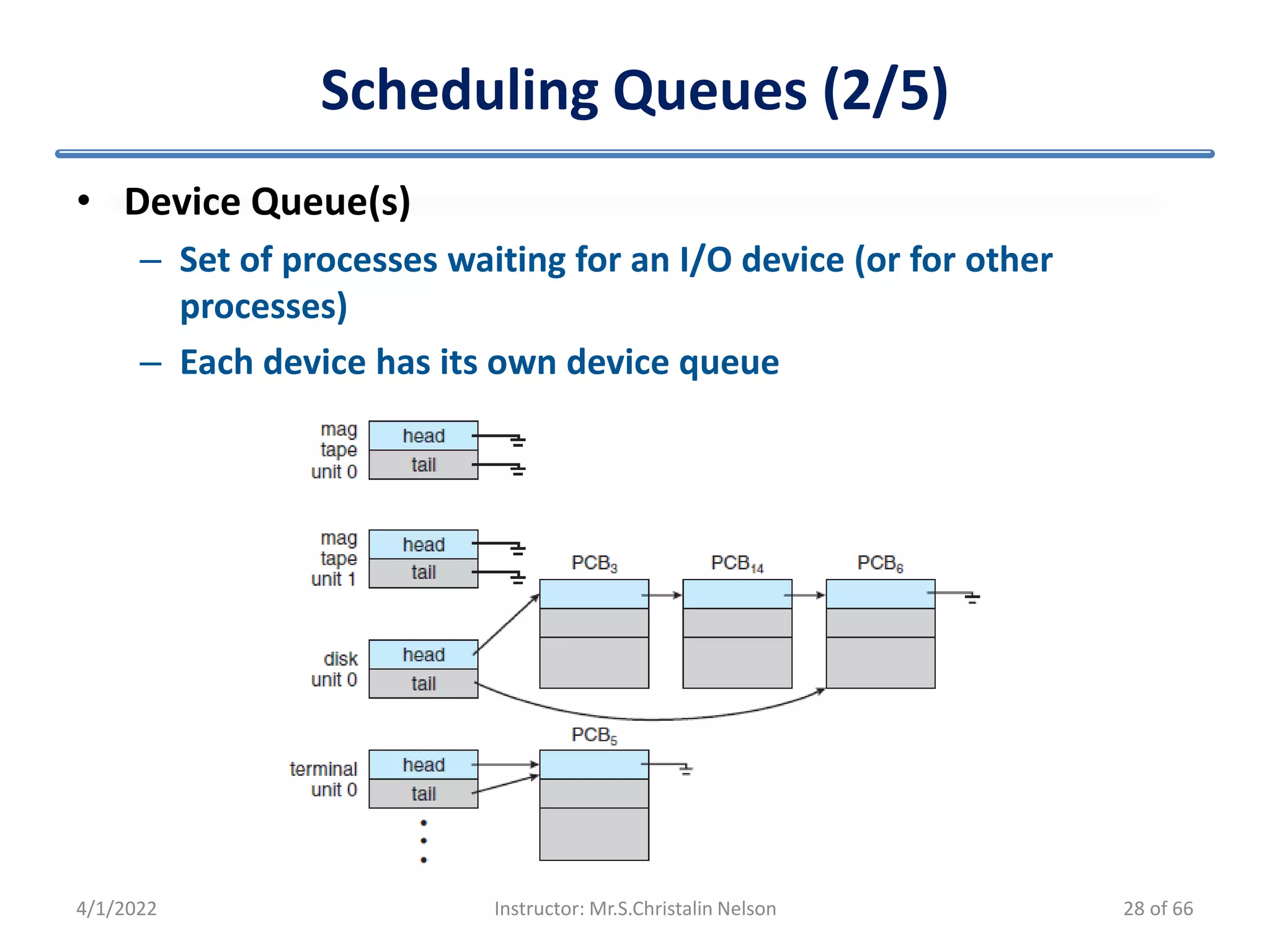



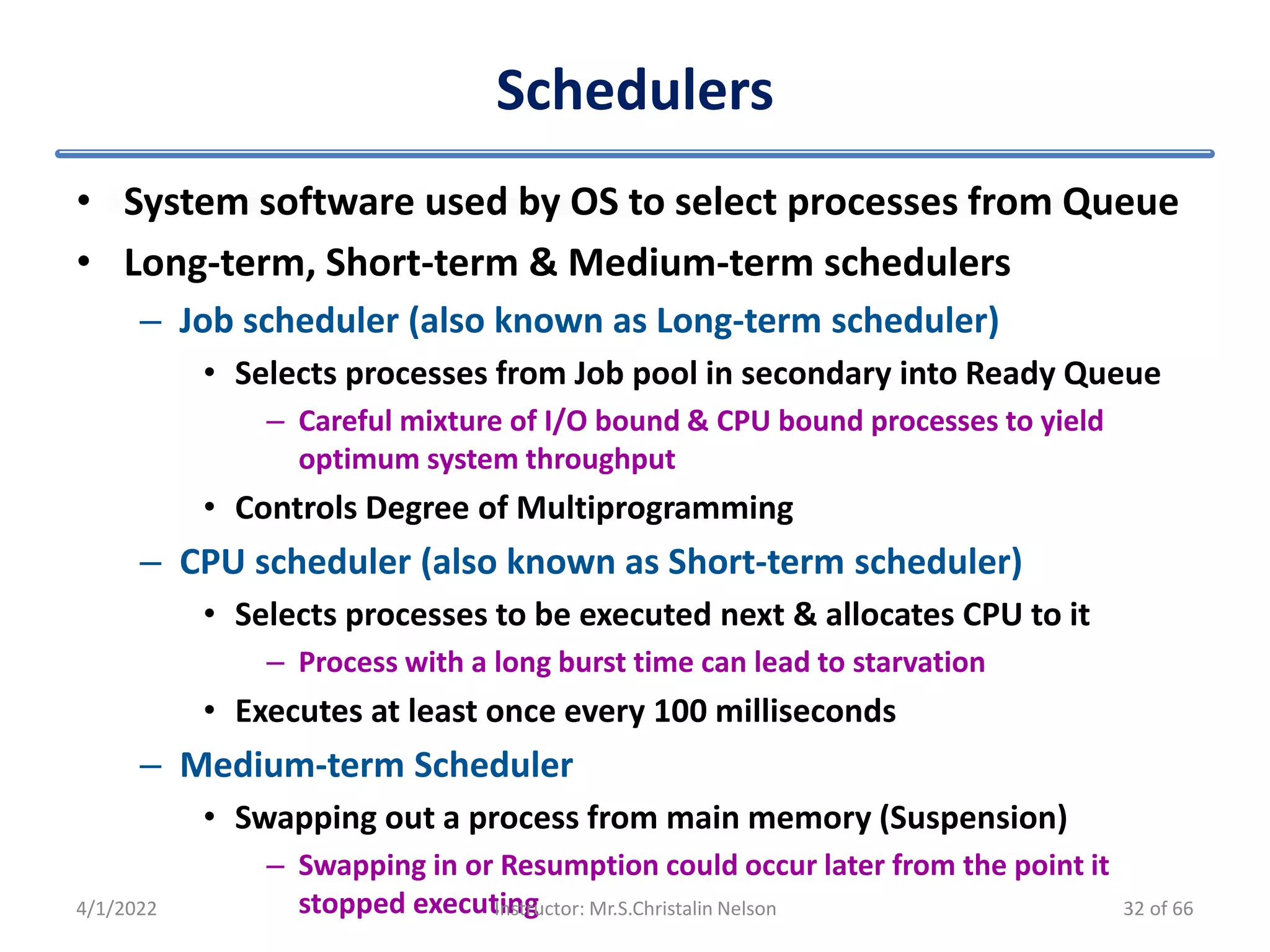







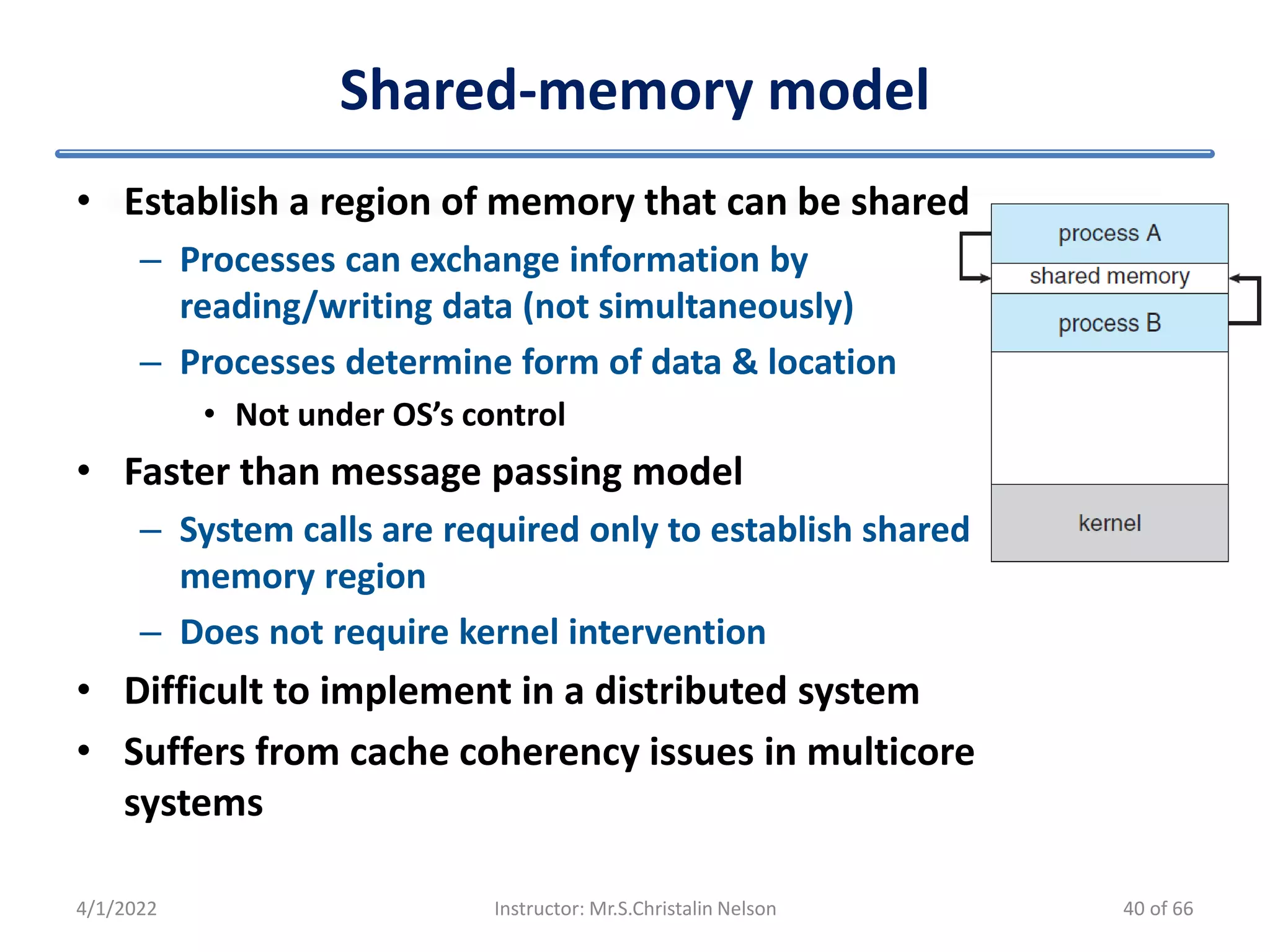






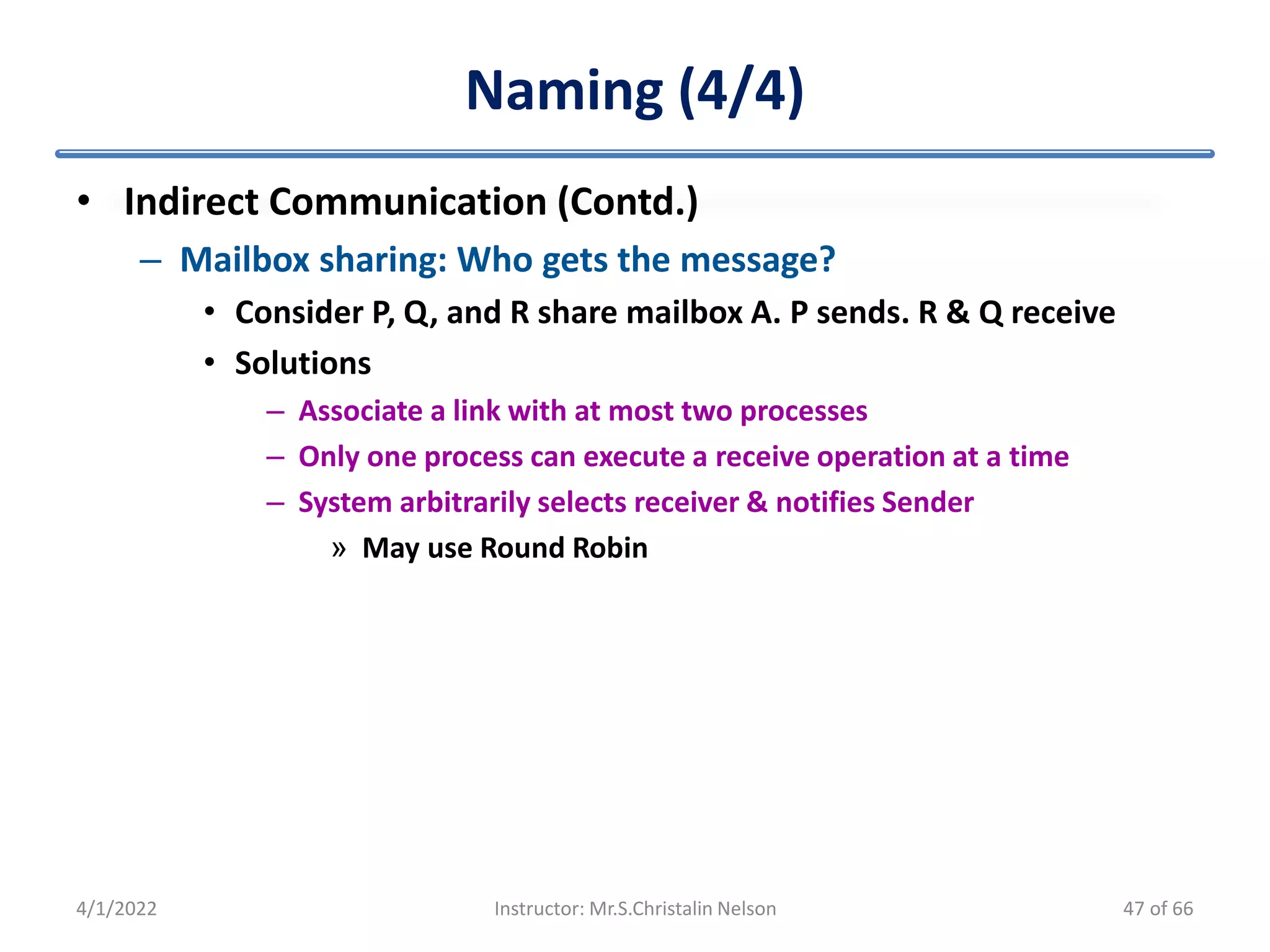


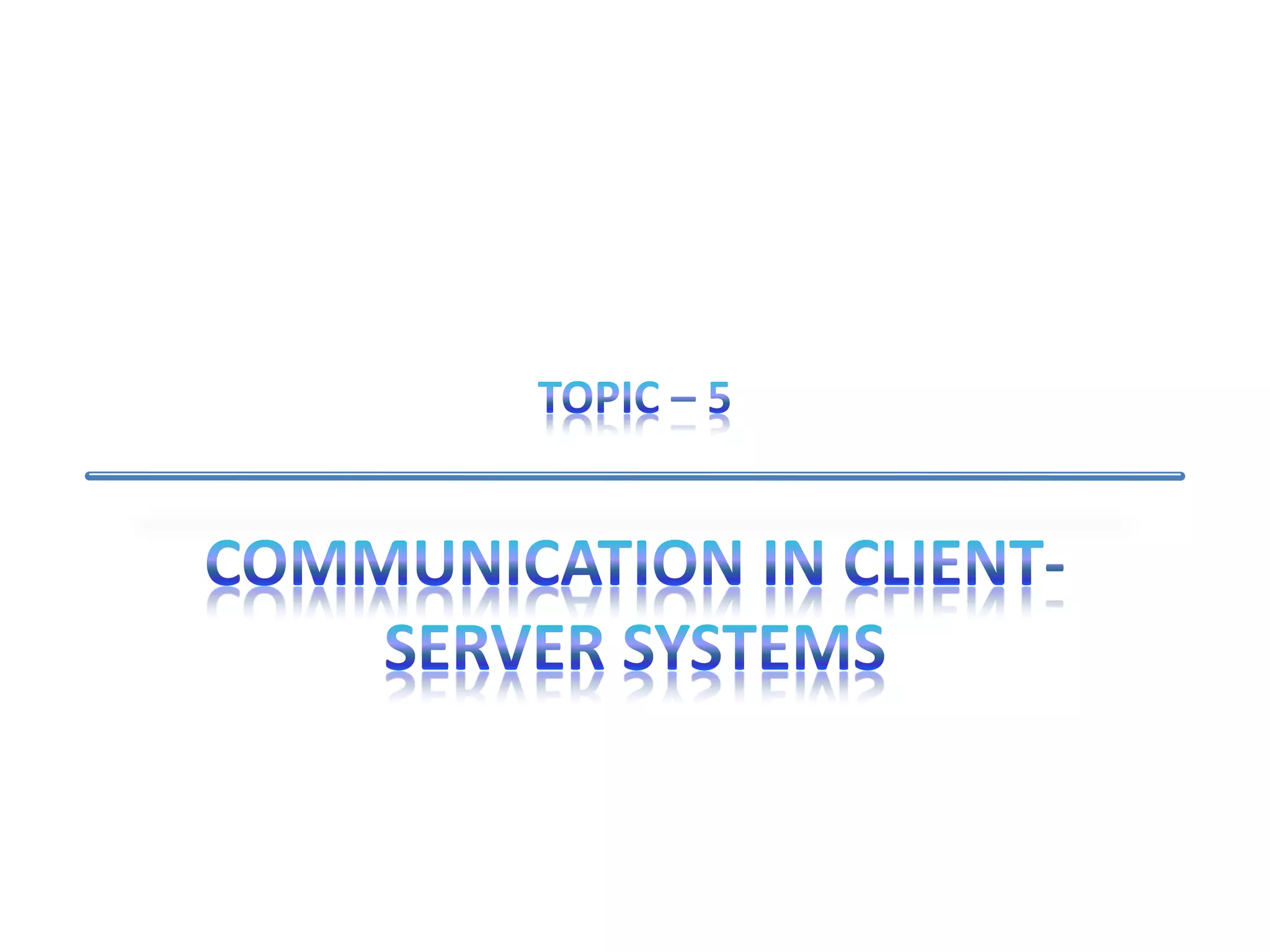






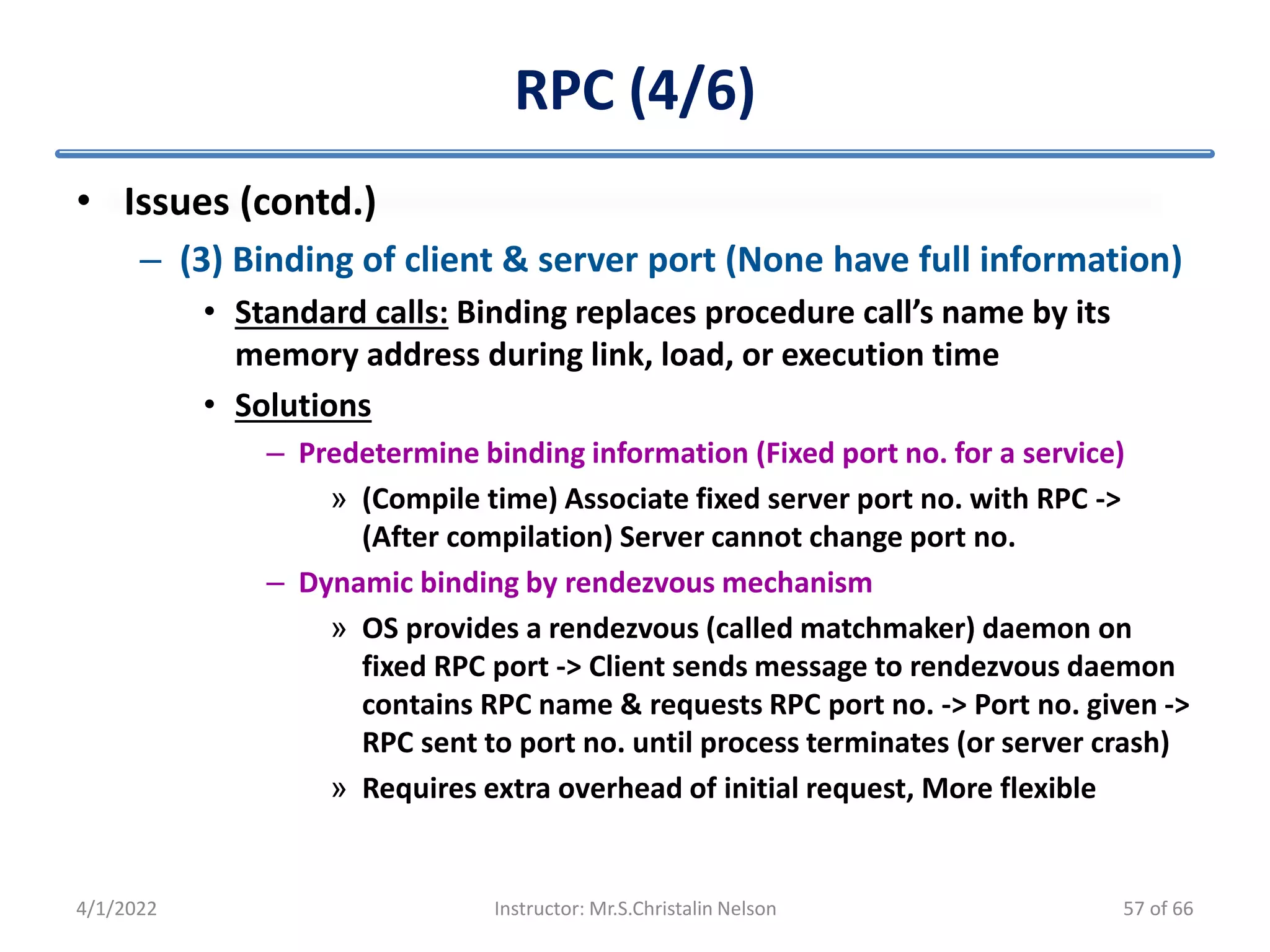




![Pipe (3/6)
• Ordinary Pipe (contd.)
– Unix
• Creation: pipe(int fd[])
• Access: read(), write() system calls
– Windows systems (referred as "Anonymous pipes”)
• Creation: CreatePipe()
• Access: ReadFile(), WriteFile()
• Programmer specifies the attributes to be inherited by child
4/1/2022 Instructor: Mr.S.Christalin Nelson
Read
End
Write
End
62 of 66](https://image.slidesharecdn.com/processmanagement-220401090258/75/Process-Management-62-2048.jpg)



